The mosquito, carrier of disease
Who has never been confronted with the presence of mosquitoes? This biting-sucking insect can also become a real problem in certain sectors, as their number increases. Discover in this file a set of answers and products that will allow you to best fight against this invasive insect.
|
I wish |
|---|
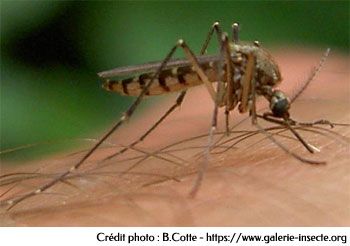 Latin name : Assex pipiens, culiseta annulata, aedes punctor
Latin name : Assex pipiens, culiseta annulata, aedes punctor
Order : Diptera
Family : Culicidae
Size : 4 to 7 mm
Location : any habitat
Period : from spring to autumn
What you need to know about the mosquito
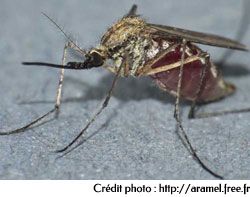
Culex pipiens female gorged with blood Everyone knows or thinks they know these small insects of a few millimeters, which annoy our summer evenings.
In France, there are 67 species (mainly four of which willingly pump our blood!). But there are at least 2500 of them, which are found both in the polar regions and in the equatorial forest. Man is therefore not the only vertebrate affected by these attacks.
The female prefers a temperature between 15 and 30°C, with relatively high humidity.
These conditions are mainly found during the summer months, in the late afternoon and after sunset, as well as in the early morning and after rain.
After mating, the female, which is the only one to bite, needs protein (blood) to bring her eggs to maturity. The male, meanwhile, forages the flowers to feed.
For the place of laying, the only common point between the different species of mosquitoes is the need for water. All water points, except constantly rough seas, can be used to lay the eggs. Ponds of course, but also the edges of watercourses, saucers in flowerpots, tin cans or footprints in the ground are all good places for laying eggs.
Usually the eggs are laid singly, but they are also found clinging to each other, forming trays or small rafts floating on the surface. Depending on the species and the time of year, hatching occurs after a few hours or several months. Some mosquito eggs can withstand a drought period of three to five years.
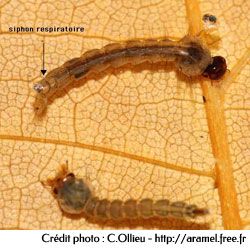
The evolution of the larva (from 2 to 12 mm) takes place in an aquatic environment. It is mobile and breathes at the surface of the water either directly or through a respiratory siphon. It finds its food either on the surface or at the bottom of the breeding site. When it has finished growing, the larva becomes less active and pupates, taking in air through its breathing tubes.
When the temperature is favourable, the whole cycle from egg to adult stage can last less than 10 days.
On average, females lay 2-3 generations.
At the end of summer, the adult mosquito can overwinter in any room, even unheated.
Females are especially attracted to certain smells coming from the host: sweat, clean smell of the skin, steroid amino acids, urine, etc. Carbon dioxide (CO2) exhaled by the host would play an important role in triggering mosquito flight in a room.
The species, the meteorological conditions, their energy reserves, unfavorable conditions, ... are determining factors on the distances traveled by these insects. A mosquito that bites you can therefore come from a few tens of meters or a few tens of kilometers.
How does the mosquito locate its host to feed ?
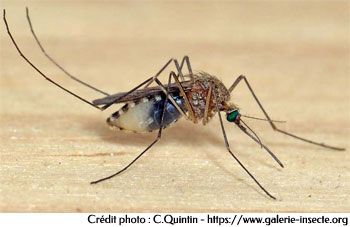
The culex mosquito. A disease vectorMosquitoes locate their hosts using a highly specialized recognition system, called chemoreceptors, located on the antennae. These chemoreceptors are sensitive to different parameters :
- Olfactory
- Perception of heat
- Infrared radiation
- Day/night vision
- Chemo-olfactory (perception of specific molecules and smells)
- Vibes
Some mosquitoes identify the CO2 that is emitted during normal exhalation, or significant exhalation following physical exertion, in the smell of perspiration. Specific data (osmolarity, salinity, chemical composition) confirm to “biting suckers” such as mosquitoes that they are indeed sucking blood and that they can therefore feed themselves. The accuracy of sensory perception is related to the number of chemoreceptors. These also serve the needs of sexuality. The mosquito which lives more or less far from its host (contrary to a chip for example) is equipped with approximately 5000 antenna receivers.
The mosquito, a vector of disease
Mosquitoes are "vectors" of diseases, that is to say, they only carry the pathogen. This is the case for malaria, a disease responsible for nearly one million deaths per year, and for malaria, transmitted in Europe by mosquitoes of the Anoheles genus.
In France, for many years, mosquitoes no longer theoretically pose a danger to humans, which has not always been true since in the 1940s, the Hérault region was nicknamed the "country of fever !
1. Wear long clothes
Cover yourself with loose clothing in light shades, white or khaki, taking care to cover your wrists, ankles and neck. Also remember to spray your clothes with our special textile insect repellents (Penntybio or Aries).
2. Avoid
Avoid smelly shampoos, perfumes and aftershaves that will attract them.
3. Protect yourself
Consider applying body protection such as our Penntybio or Aries mosquito repellent lotion to your skin.
4. Prevent any approach
Install screens on all windows whenever possible. Treat with our flying insect repellent or Habitat all entrances, bedding, curtains, mosquito nets and any surfaces you wish to protect.
5. Treat ambient air
Close doors and windows and spray in the ambient air or directly on mosquitoes either Ecodoo insecticide or Aries flying insecticide. Finally, in the field of fumigation: the Habitat Biovétol fogger. This product will give excellent results on this type of insects. Insecticide based on active ingredients of plant origin (pyrethrum + geraniol), intended for basic treatment of the habitat. Very volatile, the solution is deposited in the smallest recesses where parasites and insects lodge. Immediate action. 3 different formats exist: 75ml for a treatment of less than 15m², 150ml, for a treatment of less than 30 m². Finally, 250ml, for a treatment larger than 30m².
6. Keep them away
The mosquito hates very ventilated areas. The air movements caused by a fan will therefore help you to keep them at bay. Products also exist. There are several solutions for this :
a - Diffuse our special anti-mosquito mixture (synergy of essential oils) or lemongrass. This will keep them at bay.
b - The Aries mosquito repellent electric socket with its concentrated mixture of geraniol will keep them at bay for a whole night.
c - Our mosquito coils will allow you to keep mosquitoes away effectively. The smoke that burns from these spirals is composed of pyrethrum. The mosquitoes will be immediately disturbed and will go their way, or even die if they insist!
7. Remove larva foci
There remains an important point to limit the mosquito population: Remove near the house all stagnant water points or apply either our Anti-larvae and mosquitoes concentrate, or our Anti-larvae and mosquitoes ready to use. Also discover our Guppytrap innovation : the ecological mosquito larvae trap for pot plants, a patented invention which won a silver medal at the Concours Lépine in Paris in 2023.
8. Relieve mosquito bite
If the mosquito was stronger than you, natural products exist to relieve the itch caused by its bite. They exist in several forms.
Electric mosquito repellents !

Electrocutioners : since mosquitoes are not particularly attracted to light, this device is very ineffective.
Ultrasonic emitters : this device can be effective in keeping dogs away but a priori, not mosquitoes !
The only valid electric mosquito repellents remain those on the outlet. That of the Aries brand works by gentle heat. A tampon is impregnated with a concentrated mixture of geraniol and lemongrass, the tampon is slipped into the box. You plug it in and the product spreads for several days for effective protection.
Mosquito Breeding Conditions
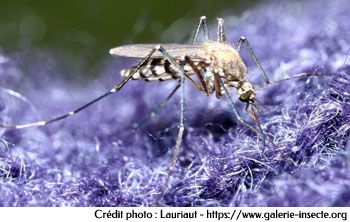
The aedes mosquito As the mosquito needs heat and humidity to reproduce, numerous and continuous rains in the spring, combined with mild temperatures, therefore favor the proliferation of mosquitoes.
If with average temperatures, it takes about three weeks to go from the egg state to that of an adult, in high heat, only ten days are enough for an adult insect to emerge.
The mosquito does not breed in running water and rarely in permanent ponds, where many predators are enough to eliminate them, but in stagnant water that can warm up quickly. For example pockets of water, following temporary flooding, in the hollow of tree trunks, leaves, plastics and other excavations. In urban areas, rainwater collectors, gutters, flower pots, abandoned bags, tires, rainwater manholes, are all places conducive to mosquito breeding.
How to fight against the mosquito ?
This begins with the systematic removal of standing water that may be breeding grounds. This operation is simpler in an urban environment than in a natural environment.
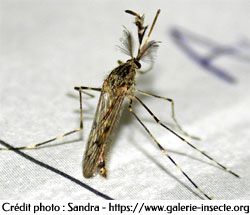
1 - A few simple operations to do
Elimination of residual puddles, turning of containers, removal of plastic waste, removal of saucers from flower pots in wet weather, caulking of gutter bases and pit openings, covering of rainwater collectors and other containers. Containers that cannot be covered should be emptied every 5 days to avoid a full breeding cycle.
The breeding ground of predilection is constituted by the septic tank from which the adult mosquitoes escape by the ventilation pipe. All you have to do is screen the latter and its upper opening and remove every year the "mosquito plug" that could possibly have formed there.
Flooded cellars, like crawl spaces, must be drained by suitable automatic devices.
Small reservoirs or collections of water will be removed, in particular old tires, various receptacles, car wrecks, etc... empty them at least every week.
This list, of course, is not exhaustive.
2 - In addition
It is also possible to use insecticides having as active molecules :
- Pyrethrins
- Pyrethroids
- Organophosphates
- Carbamates
But beware, during the invasion of Reunion Island by Aedes albopictus, massive and sometimes excessive spraying of toxic organophosphorus insecticides, such as Fenitrotion and Temephos, was carried out, in haste and without elementary precautions, arousing the anger and protest of many citizens. Certain insecticides such as malathion, used against mosquitoes, are now banned by Europe.
The massive use of insecticides is not without consequence on our environment. Most are toxic, even very toxic, for the aquatic environment and dangerous for cold-blooded animals. Think twice (see 3 !).
Our other advice on mosquito treatment
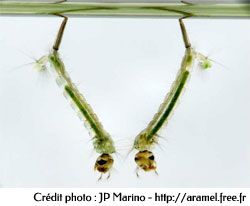
1 - Respect the buffer zones defined for the protection of the aquatic compartment.
2 - Prohibit treatments if there is a risk of heavy rain.
- Treat preferably between sunset and sunrise:
- Mosquitoes are more active at night,
- Pyrethrins are quickly destroyed by the sun (15 minutes in direct sunlight),
- Less risk of destroying "useful" insects.
3 - Treat only if the weather permits (light wind, no rain, high temperature).
4 - Spray preferably in the form of a mist (very fine droplets), which will increase the duration of suspension in the air of the product and thus its effectiveness. The mosquito must come into contact with the insecticide the moment it is sprayed.
Whatever insecticide you use, it will only act on the adult and not on the larvae, so the treatment will have to be repeated every 2 to 3 weeks. You can also treat stagnant water, to destroy the larvae, with a specific product such as Bti (i.e. Bacillus thuringiensis israelensis). Be careful not to abuse this product, there would be habituation (study in the Camargue).
Regarding the concentration of our 4J insecticide, even if we found that the mosquito was destroyed with a concentration of 1.5%, in the form of fog, it will be preferable to increase the concentration to 3% or even 5% (this will depend on the setting of the spray nozzle) in order to keep the same amount of active ingredient coming into contact with the mosquito.
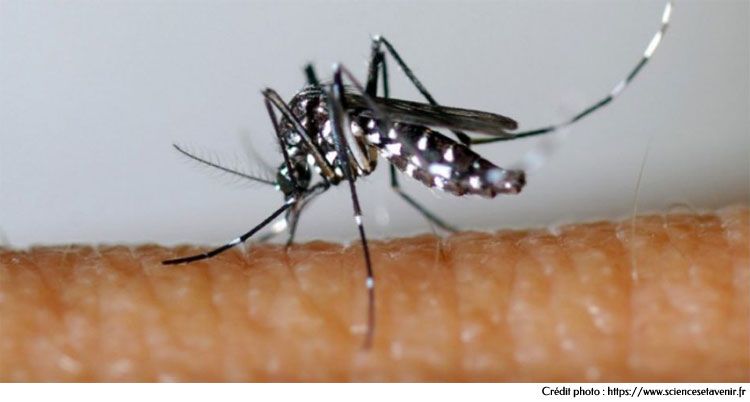
Mosquito and chikungunya
FSSET report of 15/10/2007 concerning the fight against the chikungunya epidemic using various insecticides including pyrethrum.
We have only retained the part concerning pyrethrum from this report, but you can find the whole document on https://www.afsset.fr.
- Efficiency :
- chemical family of natural pyrethrins, close to that of deltamethrin (synthetic pyrethroids)
- few cases of resistance; rarity in particular due to the nature of the substance: mixture of 6 active isomers
- used at a dose of 5 to 10 g/ha
- Toxicological properties :
- very slightly toxic by the dermal route
- non-irritating to skin and eyes, non-sensitizing
- non-mutagenic, non-reprotoxic, non-teratogenic
- carcinogenic effects observed by the oral route in animals but effects that cannot be transposed to humans; minimal neurotoxic effects in animals by the oral route
- case of onset of sensitization (eczema, asthma) in the workplace
- Physico-chemical properties and behavior in the environment :
- poorly soluble in water
- very rapid degradation in all environmental compartments
- strong affinity of pyrethrum for organic matter (tendency to retention in soil and high adsorption on particles suspended in water)
- high bioaccumulation potential for pyrethrum with potential risk of bioaccumulation in food chains
- moderate volatility of pyrethrum
- Ecotoxicological properties :
- Very toxic to aquatic organisms
- low toxicity of pyrethrum for birds and high for mammals
- very toxic to bees, due to their insecticidal nature
- Risks for humans :
- the risk associated with exposure to pyrethrum during its application is acceptable for operators and people present in the vicinity, subject to good practice recommendations in the use strategy.
- Environmental risks :
- the exposure levels determined during this work lead to risks associated with the use of pyrethrum that are of concern for the ecosystems studied.
- Usage strategy :
- in the absence of a specific analysis of the risks associated with adjuvants, prefer products formulated in phase
- if it is necessary to alternate treatments, use pyrethrum-based products
- to implement protocols suitable for applicators by focusing more on :
- to enforce the buffer zones of 25 m and 50 m defined for the protection of the aquatic compartment
- to prohibit treatments in the event of a risk of heavy rains which could lead to the runoff of substances towards more important water points
- to protect apiaries during treatment periods by a beekeeper alert system
Plants to repel mosquitoes
If you are looking for a method to keep mosquitoes at bay in addition to your usual products, certain plants can help you.
1- Lemongrass
The must-have in terms of mosquito repellent plants, it is even used as an essential oil in certain mosquito repellent products. However, its power must be qualified, it only acts temporarily. It is for this reason that the European Union has banned its use as an insecticide.
2- Pyrethrum from Dalmatia
This flower contains a natural insecticide: pyrethrin. This substance attacks the nervous system of insects (neutoxic action). It is with this plant that a good number of insecticides are made at Penn'Ty Bio.
3- Peppermint
Mosquitoes do not appreciate its smell, and as a bonus it is perfect in infusion.
4- Catnip
Also called "catnip", this plant from the same family as mint contains nepetalactone, an organic compound that has the effect of repelling mosquitoes. This plant also acts as cat bait.
5- Basil
Very easy to maintain and grow, basil, apart from the fact that it will be great for flavoring your dishes, will have a repellent effect on mosquitoes. You can therefore grow it in a bed just under your windows or in a pot indoors.
6- Lavender
Several flying insects, such as wasps, bees or even mosquitoes have their sense of smell disturbed by lavender. In essential oil, it also has soothing and relaxing properties.
7- Rosemary
In addition to scaring away several species of insects, rosemary is also an excellent remedy for bronchial coughs, ideal for winter.
Mosquito Frequently Asked Questions
Q: What insecticide and repellent products would you recommend against tropical mosquitoes (dengue, etc.) ? I live in Guadeloupe and I'm looking for an organic product to spray safely in my children's room and in the rest of the house ?
A: We have various repellents on our site, but be careful, no product can guarantee you zero mosquitoes in a room.
Q: We are in the Var and there is stagnant water under the wooden terrace... I would like to treat the mosquito larvae without harming the small lizards which also live there... which product do you recommend ?
A: In this case, you can use our concentrated solution against larvae and mosquitoes. No risk for lizards. However, snakes will not like the geraniol in this product.
Q: Do you have among your products a natural insecticide that is totally effective as a protection against malaria (one-month stays planned in Haiti during the Holidays)? (I try to avoid "DEET"-based insecticides and other harmful substances.)
A: In body protection, we have the anti-mosquito lotion that is also effective in tropical environments. You will find this product and many others on our site. Whatever the product and for good body protection, it is necessary to renew the application several times a day.
Q: I want to use one of your insecticides outdoors on plants and bushes to eliminate mosquitoes. Is this possible without damaging my plants ? If so, what product to use ?
A: You will not be able to eliminate mosquitoes by treating the plants. At best you will kill those who receive product at the time of treatment, the 2% 4J insecticide will do. Mosquito treatment is carried out on bodies of water to kill eggs and larvae and not on plants.
Q: Am I currently looking for an extremely effective mosquito repellent insecticide ? Indeed I live on the banks of the Loire and I let you imagine on summer evenings I am invaded by mosquitoes. I came across your site and it seems interesting to me only I have a question who is your product can it be applied to hedges, flowers, trees finally any outdoor object ?? is it effective over the long term outdoors even with several rains ?
A: Our repellent is based on solubilised essential oils, which means it will not hold up to rain. There is very little product that holds up to rain, which is why farmers are forced to retreat after a rain !
Q: Are the products you offer effective on the most common AEDES species in the regions north of the Loire (Aedes Rusticus, Cantans and vexans) ? Alain Boyer president of the Aube et Marne joint mosquito control union.
A: No idea, but a priori our insecticides are not selective and therefore effective on all insects !
Q: My 2 year old daughter has been allergic to mosquito bites since she was 5 months old; it's a nightmare especially since we live in the antilles; my questions: are your repellents effective against West Indian mosquitoes, could the famuex aedes agypi also wear your repellent bracelet, at her age? She gives me certain allergic reactions to some mosquito repellent (exema) which I am wary of now. THANKS IN ADVANCE FOR YOUR ANSWERS.
A: For this age, most mosquito repellents are not recommended. We no longer sell the bracelets but anyway, it would have been too big. We can offer you the Aries mosquito repellent lotion which is intended for children.
Q: We are looking for a powerful mosquito repellent for large areas that is not harmful to bodies of water (fish, frogs). To be sprayed by self-propelled sprayer.
A: We currently have nothing to offer you as a product of this type.
Q: I need to impregnate my mosquito net with an insecticide repellent. What insecticide can I use ? how often should the mosquito net be re-impregnated. Thank you for your reply.
A: The impregnation of mosquito nets is usually made from synthetic products composed of permethrin, with a longer duration of action. You will not find long-lasting mosquito net treatment products in natural, the persistence they offer is a bit short. However, you can use our Habitat insect repellent which will provide a barrier of several hours without any problem.
Q: In the South West, it is difficult to stay in our garden due to the invasion of mosquitoes. Is your Insect Repellent effective outdoors by spraying the lawn and nearby plants ?
A: No product lasts very long in the sun. It will be necessary to retreat very regularly !
Q: How then to protect oneself outside against these invasions (without resorting to treatment by helicopter as in the Camargue!!) ?
A: You have to take the technique of Reunion Island or personal protection.
Q: I have an ornamental pond near my house, how and with what product can I treat in order to eliminate mosquito larvae ?
A: Our products being soluble currently we have nothing to offer you. You need a non-soluble insecticide that will "float" on water. Maybe neem oil.
Q: I would be interested in the mosquito repellent bracelet.
A: For now we have stopped marketing this product due to allergic reactions from some customers.
Q: What is the shelf life of Mosquito and Flying Insect Repellent Lotion (and other products in the range) ?
A: Each product has a specific duration, most often it is 2 years after the product is manufactured.
Q: Is your 5% 4J insecticide harmful to animals ? indeed with the rains we are invaded by mosquitoes in our garden, however there is no stagnant water but the ground being waterlogged I think that the mosquitoes have developed. Can we put this insecticide in a 4% dilution on grass and trees ?
A: Pyrethrum-based insecticides are only harmful to cold-blooded animals like fish. Yes, it is possible to put this insecticide in a 4% dilution on grass and trees. However, keep in mind that it will kill any insects that will be affected by the product. It is therefore preferable to do it at nightfall, when mosquitoes come out and other insects go to bed.







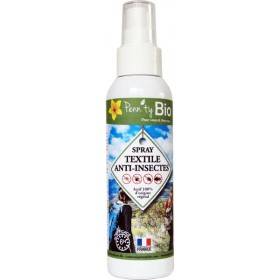
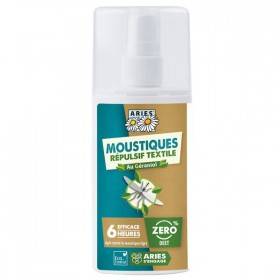
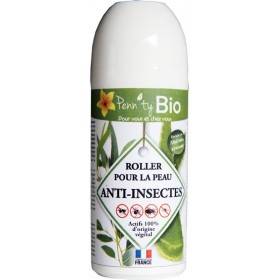
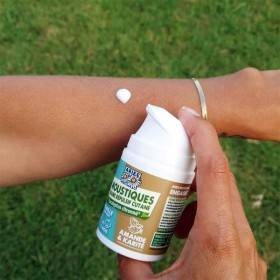
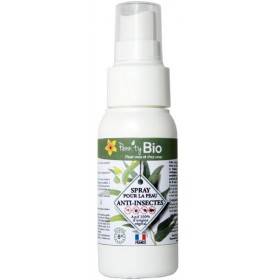
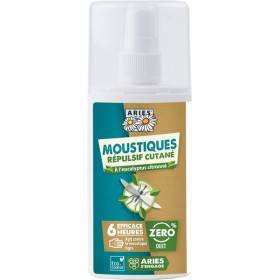
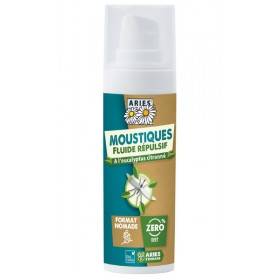
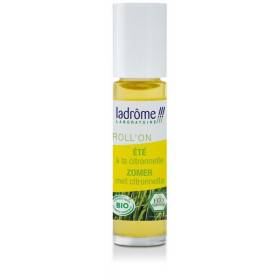
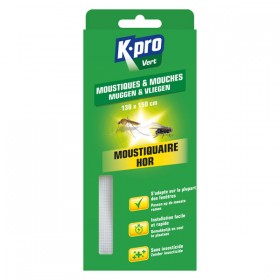
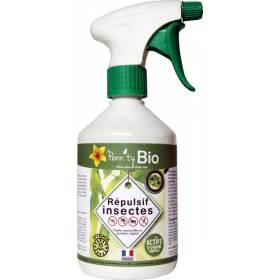
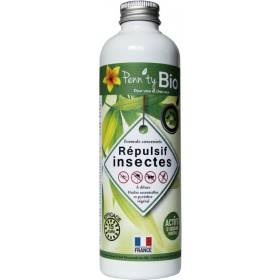
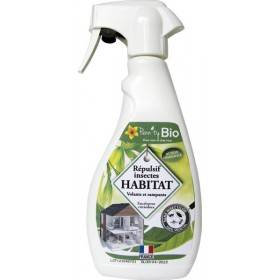
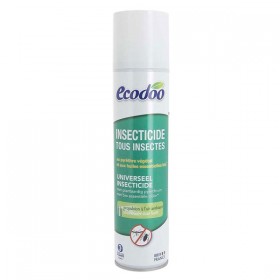
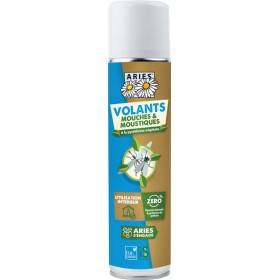
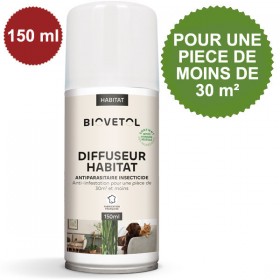
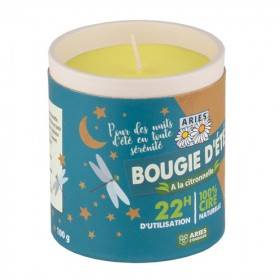
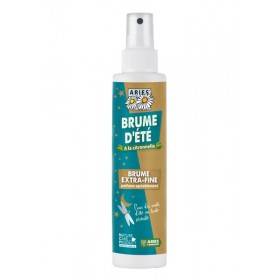
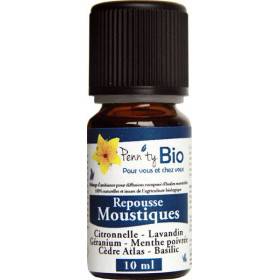
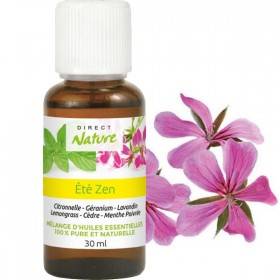
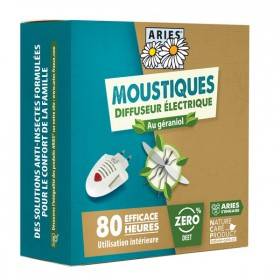
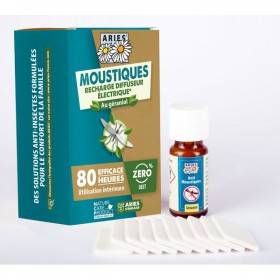
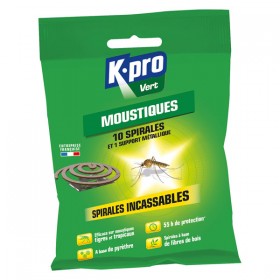

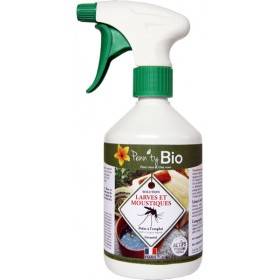
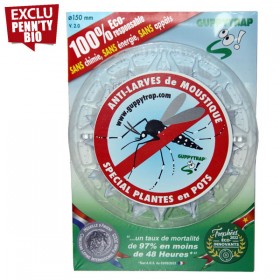
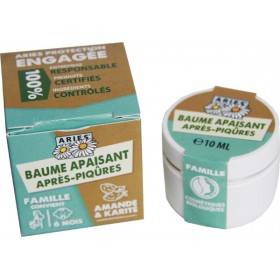
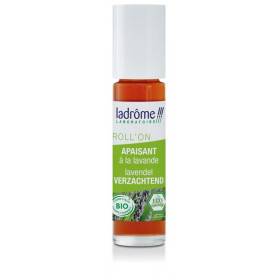
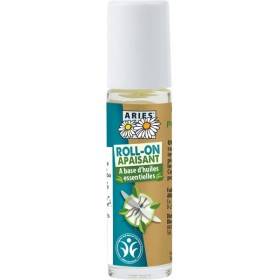
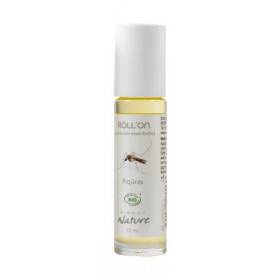

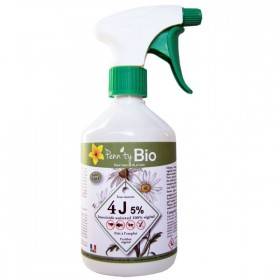
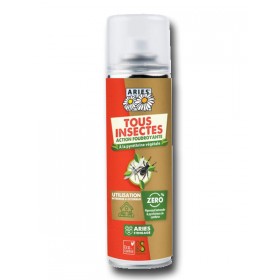
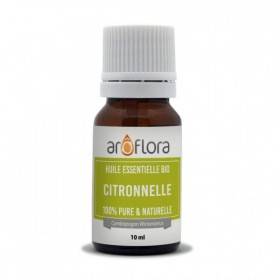
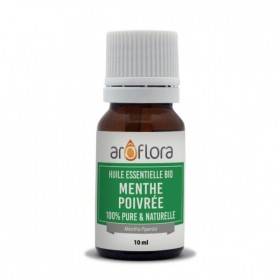
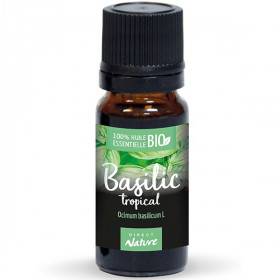
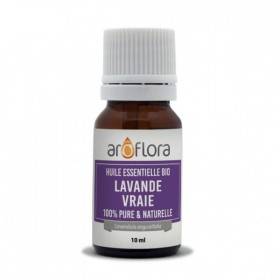
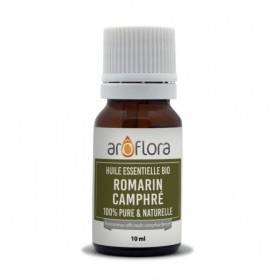
Customer reviews
Toujours satisfait et pour les prix et pour les produits.
andré a.
Cliente fidèle depuis plusieurs années, je ne peut que recommander ce site. Tout est parfait. Tous les produits au top, rapidité d’envoi, gentillesse, allez y les yeux fermés vous ne serez jamais déçus.
Marité 06
Satisfaction totale. Entreprise au top. J'ai téléphoné le lundi matin, malgré que les contacts téléphonique ne sont que l'après midi, une personne très charmante m'a rappelé presque aussitôt pour mes donner les infos que je souhaitais connaître sur ma commande. Bravo. nous sommes mercredi et ma commande est arrivée. Encore bravo continuez comme ça.
Jacques M.
Très bon site, très sérieux je recommande, produits de qualité et service après vente au top, de plus livraison des plus rapide et produits très bien emballés, tout est parfait
virginie
Hélène
J'ai découvert ce site en cherchant de la terre de Diatomée. Livraison rapide. Très sérieux. J'ai mis la page dans mes favoris car j'ai repéré d'autres produits.
Isa
Client depuis des années Produits de qualités et surtout qualité de service.
XX
Un grand merci pour la qualité et la rapidité de votre réponse.
Simon
Service au top !!!<br /> Colis reçu très rapidement avec un petit mot manuscrit me remerciant de ma commande et de la confiance que je leur ai témoigné <br /> Suffisamment rare pour être signalé <br /> Je vous encourage toutes et tous à les soutenir en passant commande chez eux!!!!<br /> Longue vie à Penn’Ty Bio !!!!<br /> Ils le méritent
Pierre-Steph
Merci beaucoup le colis est arrivé à la poste hier et je te retire aujourd'hui Merci pour votre efficacité et votre rapidité
Ingrid
Très contente des produits de qualités et une commande reçu très rapidement. Merci
PATRICIA A.
Produit anti puce extrêmement efficace !<br /> Le vendeur a pris une demi-heure de son temps pour m'expliquer absolument tout ce qu'il y avait à savoir sur le produit, de la composition a la mise en œuvre.. Bref au top ! Je recommande donc vivement Penn'ty !
Louis
Penn'Ty Bio wonderfully served our family in Switzerland so that we could try the range of Totemsavon products, which are such caring, loving, and consciously manifested creations :)<br /> <br /> By allowing a shipment to Switzerland and elsewhere, I am sure so many more people would be able to benefit from the beautifully selected product portfolio in Penn'Ty Bio and all, together, make a conscious leap by using and demanding a way more purer approach to anything we interact with.<br /> <br /> Thank you so so much Penn'Ty Bio!<br /> <br /> In 8 Love We Heart Trust<br /> <br /> Miguel Ángel
Miguel Ángel
Commande bien reçue. Je suis tout à fait satisfaite. A bientôt.
Tania
produit parfait.
René
Les produits ont été très appréciés par la destinataire. <br /> De plus quand on pose une question, on a toujours une réponse, un conseil très rapidement. Merci pour votre réactivité
xxx
Très contente d'avoir découvert ce site internet ! Du conseil jusqu'à l'achat c'est super. J'étais très embêtée après l'apparition de petit insecte chez nous (des anthrenes) et c'est le seule site internet e-boutique qui a pu nous renseigner dessus et enfin indiquer les produits pour les éradiquer sans pour autant nuire à notre santé (mais en respectant les conseils d'utilisation bien sûr). J'ai reçu ma commande rapidement, et avec surprise un petit mot de remerciement personnalisé avec mon nom dessus. Des détails qui au finale font la différence. Un service de qualité rien à dire. Merci !
XX
J'ai reçu mon colis hier. Merci de vos démarches,
Sam
L’esprit commerçant de proximité chez un vendeur en ligne !
Philippe
Rapidité, emballage nickel et écologique, mot de remerciements personnalisé, produits au top....j adore....je suis une nouvelle cliente conquise. Un grand merci...
Hélène P.
Très bien , bon produits, La prochaine commande avec plaisir, livraison très rapide.<br />
Rainer
Bon produit mais frais de port un peu cher.
Marie Paule
Très bon produit, conforme à la description.
MICHELE P.
J'apprécie depuis de nombreuses années la qualité de vos produits et le sérieux de votre site. Une petite mésaventure avec un diffuseur me permet de vous féliciter pour la réactivité de votre SAV. Bravo !
Thierry G.
Envoi rapide et soigné, produits efficaces et réponse rapide à mes questions. Je recommande.
xx
Merci et bravo pour la qualité des produits et du service toujours aussi efficace et performant.
Annick P.
Livraison très rapide. Bravo pour la réactivité
François
Comme d'habitude, envoi soigné, produits performants, Merci.
XX
Je voulais juste vous remercier. J ai reçu mon répulsif " lézards" aujourd'hui, un petit mot super gentil joint à ma commande ça fait plaisir. J espère que ça va fonctionner. Bonne journée à vous et merci.
Cynthia
Pour ma part j'ai été satisfaite de la réalisation de ma commande et du délai de livraison. Je recommande votre société.
Nelly
Envoie soigné et rapide.<br /> Merci pour le petit mot à la main.<br /> Très appréciable.
XX
Un diffuseur plus de 80 M², avec huile essentielles eucalyptus, vraiment formidable, on respire mieux et çà sent super bon. Le matin 1 heure, et le soir 2 heures. De jolies couleur, et pour les fêtes une jolie ambiance. Bravo.
PATRICK
Très bien !
XX
Très satisfaite de ma commande chez Penn'ty bio. Site très détaillé, produit reçu rapidement, message manuscrit très sympathique. Je recommande !
XM
Livraison rapide et soignée. J'utilise les produits bio qui sont de très bonnes qualités. Un savon m'a été envoyée par erreur à la place de celui commandé et il m'a été remplacé très rapidement. Bravo pour leur réactivité. Je recommande fortement ce site.
Liliane
Envoi rapide, emballage au top, continuez comme ça... :-)
bruno b.
Une utilisation de vos produits a suffit pour nous débarrasser des poissons d'argent. Merci.
Matthieu
Tout est parfait : la qualité des produits, la rapidité d'expédition, la qualité du colis. Je suis enchantée et resterai fidèle à ce site.
Dominique
Merci pour le geste commercial, et aussi pour les nombreux conseils et l'excellent service client.
Tristan L
Produits facile à utiliser, efficaces et finalement pas plus onéreux, à l'usage que des produits issus de la pétrochimie. Service livraison impeccable. Je recommande +++<br />
XX
Client depuis de nombreuses années, je suis satisfait à la fois de la boutique et de pratiquement tous les produits achetés.
Jean-Claude
Très satisfaite par Penn ty bio. En effet, suite à un produit défectueux ( housse matelas) , j'ai aussitôt reçu un bon de retour pour renvoi gratuit en colissimo et ai reçu la nouvelle housse dans les 48 h, avant même le renvoi de la première housse. Merci pour la réactivité et la confiance de cette entreprise.
dominique B.
Livraison express. Colis toujours aussi bien préparé (cales, flocons, adhésif sur les bouchons qui risquent de couler). Bravo pour votre professionnalisme.
Isabelle
J'ai toujours été satisfaite de mes commandes chez Penn'ty bio. Rapide efficace. Surtout les caractéristiques des produits est claire et complète. et le site contient beaucoup d'informations sur les différentes gammes. Merci pour votre travail et votre activité.
XX
J’ai bien reçu le nouveau diffuseur fonctionnel après essai et je vous remercie pour votre confiance et votre rapidité sur le traitement de mon problème. Ce n’est pas tous les jours que l’on voit un SAV aussi efficace !
Florent
Bon service et bon produits
Odile R
Très bons produits je les recommande.<br /> Merci à Pennt'ty Bio pour tout, aussi bien pour les commandes et les emballages.<br /> Bravo Pennt'ty Bio.
Bernadette G.
Colis bien arrivé. Emballage remarquable. Diffuseur très joli, très efficace et peu bruyant avec de la couleur qui change. Très satisfaite de la commande.
Sabrina
Cliente depuis plusieurs années, j'apprécie toujours ce site. Meilleures salutations.
France
Service rapide et efficace. Et Sympathique ! toujours un petit mot, ça fait la différence. Et c'est français en plus :). Je recommande.
XX
yvette
Je vous remercie pour vos services. C'est très agréable d'être informé de la sorte.
Anthony
Livraison rapide et fiable, dès que le chèque a été reçu. Produits de bonne qualité.
Chantal H.
Juste un petit mot pour vous remercier de votre disponibilité et pour vous dire également que je suis très satisfaite des produits que j'ai acheté, ils sont vraiment efficaces.
Barb.
Rapide, sérieux, très bien emballé, un sans faute.Merci.
L.H.
Penn' Ty Bio, c'est ma référence depuis 10 ans au moins. Je ne commande mes produits de toilette et d'entretien que chez eux. Les marques et le service est irréprochable.
GAELLE
Commande tout à fait conforme et emballée avec grand soin.
Sarah
J'ai bien reçu le colis sans aucun problème. Merci pour la rapidité et le sens du service.
Nicolas
JM
J'ai passé ma première commande, chez vous il y a trois jours à peine et ce matin, je reçois mon colis.
Sophie
Livraison très rapide et produits bien emballés.
Catherine
Une entreprise fiable, efficace, de confiance, chez qui je recommande de faire ses achats.
S.
accueil téléphonique personnalisé réactif compétent et bienveillant, livraison rapide et conforme. BRAVO merci pour la qualité de votre travail
Annick
Merci pour vos conseils avisés. Et merci pour vos produits de qualité.
Loïc
Parfait! Préparation et expédition de la commande hyper rapides. Emballage très soigné (j'ai acheté un produit fragile). <br /> Je suis très satisfaite!
Elise M.
Très bon site, du personnel sérieux et la livraison en temps et en heure. Merci
Marine T
sérieux
XX
Livraison toujours rapide. J'ai expérimentée le service après vente qui à été excellent avec une réparation rapide et sans frais. Je recommande vivement Penn'Ty bio
Nadine
Excellent service après vente après un problème d acheminement de colis par la Poste. Une relation client de très grande qualité. <br /> Cordialement,<br /> <br />
PV
Très satisfaite. Je recommande cette société sérieuse. bon suivi de la commande.
Sandrine
Très contente de vos produits.
nathalie G.
2 commandes à mon actif et jamais déçue. Vous avez gagné une cliente régulière :) Merci pour votre sérieux et le contenu bien rempli de votre site ! c'est super d'avoir une description hyper détaillée de chaque produit.
clara
merci pour votre professionnalisme. Merci pour les produits envoyés dans de bons délais. Merci pour la qualité de vos produits
Marcelle
Tout était parfait l’envoi la livraison merci beaucoup
XX
Super, envoi rapide,bien protégé et petit cadeau !
xx
Parfait ! Envoi rapide et produits de qualité. Merci pour le petit mot. Je suis très satisfaite !<br />
Julieanaïs
Au fil de mes commandes (j'en suis à la 5 ou 6ème) décidément, du sérieux et de l'écoute ! chaque fois que j'ai eu un petit problème: contact immédiat, réponse immédiate, et tir rectifié illico ! Dans le top 5 de mes sites internet !
Vincent
Excellente communication, service très rapide (même à l'étranger), emballage parfait ...
Jacques N., Belgique
Suite à un précédent message notifiant une erreur de produit à la livraison, Penn'Ty bio m'a fait parvenir à titre gracieux le bon produit. Merci
Martine
J'ai bien reçu mes articles et je vous remercie pour la livraison rapide et impeccable !
Françoise
Excellent site. Très à l'écoute. Livraison rapide. Problème avec un piège à guêpes un autre m'a été livré très rapidement. Chapeau et très agréable de tomber sur des gens compétents.<br /> Encore merci.
XX
Dommage, les vendeurs ne savent pas lire les indications inscrites sur les produits qu'ils vendent
XX
Personne disponible, de très bon conseil suite à des punaises de lits dans mon habitation, les produits sont efficaces car depuis aucune punaises et la vie à repris son cours ... merci pour tout
Nathalie
Commande reçu en 2 jours, impeccable. Tous les produits emballés avec le plus grand soin, petit mot personnalisé! Et encore un petit savon bio au parfum délicieux comme cadeau!! Merci Penn'Ty Bio !!
Orchidée
Envoi très rapide et bravo pour votre site de reconnaissance des insectes nuisibles.
Brice
C'est extrêmement délicat de votre part d'avoir fait diligence. Je ne manquerai pas de recommander votre site et de souligner votre gentillesse. Encore merci
Michel
Les produits achetés sur le site sont de très bonnes qualités, et j'ai été très bien conseillée. Je recommande !
Aurore
Livraison rapide et bien emballé. Petit message manuscrit qui fait plaisir :)
xx
Un plaisir de recevoir les colis soignés et respectueux de la planète de Penn’Ty Bio. Merci
k.
Content des produits achetés, reçu rapidement et bien emballé. Merci.
XX
Très satisfaite du produit.Rapidité et emballage très soigné.SERIEUX.
MARLENE
Toujours très bien et parfaitement emballé ! Merci<br />
Valérie
Envoi rapide. Rien a redire.
Marie France
Vos explications par email ont été très claires et votre diligence dans le traitement de ma commande et de mes demandes est très appréciée.
Henri
Livraison rapide et très bien emballé et protégé. Très bonne efficacité. <br /> <br />
XX
Livraison en temps record à l'adresse indiquée en France puis départ dans l'océan indien. Reception des produits en quinze jours à l'autre bout du monde : ravie. Je vous laisserai les avis produits une fois utilisés. Le site est très bien fait et très agréable à utiliser. Le petit mot à la main dans le colis humanise la transaction, je l'ai apprécié. Je pense que vos produits sont très utiles et je vous souhaite une belle réussite et sur la durée.
Sylvie D.
Je vous remercie beaucoup de m’avoir fait profiter d’un acheminement par Colissimo alors que rien ne vous y obligeait, sauf votre conscience professionnelle, chose rare de nos jours et qu’il ne faut jamais manquer de souligner.
Cécile
Jamais déçue : les produits correspondent à la description et sont livrés rapidement.
Mireille
Tout est parfait à chaque fois. L'attention portée va même jusqu'au petit message, c'est agréable. Fidèle aux produits et au site plus que jamais.
xx
Une grande compétence, Monsieur Dufil est très professionnel et sait soigner ses clients. Quand à la gamme de produits proposés, elle est parfaite et complète.
Alain A.
Excellent site d'achat. Très rapide et que de bons produits.
James
Une boutique en ligne, sympa et très réactive. On apprécie surtout la livraison express. Pas besoin d'être américain pour livrer dans des délais de champion !<br /> <br />
Daniel de Paris
Merci à Penn'ty bio d'avoir garder beaucoup de produits de la marque Lerutan et pour le sérieux dans la préparation et l'expédition des colis. Je recommande.
SR
Commande reçue assez rapidement. Merci pour votre sérieux.
Émilie
Je suis une amie de vos parents et suis toujours très satisfaite de tous vos produits. Ne changez rien et bonne continuation.
Marité D.
en comparaison d'autres produits employés précédemment, je trouve les vôtres beaucoup plus efficaces et cela sur le court terme ,disparitions des odeurs en combinant les produits suivant vos conseils .
XX
Très satisfaite des délais, les produits sont bien emballés et le petit mot sympathique est fort agréable!<br />
Sylvana
Livraison très rapide et produits intacts à l'arrivée grâce à un emballage impeccable.
Etta
Bravo pour votre sérieux. Colis reçu très vite et produits impeccables. Belles fêtes de fin d'année
Mat
Super efficace !!!
xx
Merci pour votre efficacité et votre gentillesse, commande, livraison, petit mot agréable, tout était parfait !
Sylvie
Commande reçu très correcte, très bon matos, encore merci et bonne continuation.
Dominique et Monique A.
Très bien...merci.
Olivier
J'ai bien reçu le diffuseur et j'en suis très content.
Paul
Très bons produits, service rapide et de qualité, rapport qualité/prix intéressant. Je recommande vivement.
Alain
Correspond à mes attentes
Henry
Excellent article sur les diffuseurs d'huile essentielles ! grâce à lui j'ai pu faire mon choix basé sur une excellente analyse de votre part !
Laurence
Parfait. Rien à redire. Extrêmement efficace.
Quentin
Je me permets de vous écrire un petit mot afin de vous dire que votre site est très bien fait.
Tom
Bien, la majeure partie des produits sont efficaces. Je connais cette boutique depuis plusieurs années, je recommande ce site.
XX
Bon site, fiable, rapide et efficace.
Leo L.
MERCI au personnel à l’emballage !!! Ma dernière commande était super bien emballée. Elle a résisté aux (épouvantables) chocs subis pendant le transport. Merci
Veronique
super emballage écolo...bravo !
Isa
Je vous remercie de votre professionnalisme et de votre réactivité.C'est loin d'être toujours le cas lorsque l'on commande sur internet.
Gaëlle
Bons produits. Fonctionnent très bien.
xx
Parfaitement parfait, je ne me fournis que chez Penn'ty bio depuis qu'ils m'ont débarrassée de punaises de lit.<br />
MARIE CLAUDE G.
Produits de bonne qualité, naturels et efficaces, expédition rapide et bien emballée, sav très rapide suite à une erreur de ma part,
XX
Bonjour, je voulais vous féliciter pour la clarté de votre site, la rapidité de la livraison et la qualité de l'emballage.
catherine R.
fidèle cliente de Penn'Ty Bio, je ne me fournis que chez eux.
XX
Fiable, et très bons produits , Service après vente efficace et sympathique.
Vilma V.
J'adore. Très grande diversité de produits, les explications sont simples et complètes.Quand aux colis, ils sont extrèmement bien protéger. Un grand merci.
Nadine
J'ai bien reçu ma commande. Com' dab' , rapidité efficacité ...Merci
Sally
C'est ma première commande chez Penn'Ty Bio, et ce ne sera pas la dernière.<br /> J'étais à la recherche d'un nouveau diffuseur d'HE et, après discussion avec Quentin, mon choix s'est arrêté sur l'Elixia (Direct Nature) qui est d'une efficacité redoutable et d'un silence absolument surprenant.<br /> La livraison s'est faite en 72h en point retrait avec un conditionnement hyper sécurisé.<br /> Lors du déballage, j'ai constaté un léger défaut de finition sur la verrerie.<br /> J'en ai fait part à Quentin par texto avec photos à l'appui.<br /> Il m'a aussitôt recontacté pour me proposer un envoi d'une nouvelle verrerie dès que disponible.<br /> Un professionnalisme et un sens du service exemplaires qui font de cette enseigne une valeur sûre.<br /> Penn'Ty Bio est vraiment la boutique en ligne qu'il vous faut connaître.<br /> Je vous la recommande vivement.
Jean-Yves S.
Excellent!! Commande passée le lundi, reçue le mercredi!!! Les produits sont en plus de super qualité !
MADELINE
merci de votre disponibilité et amabilité!
Eric
Livraison ultra rapide, bien emballée. Produits au top. Parfait !
Caty
Envoi très rapide, personnalisé et soigné. Merci
XX
Dimanche soir, invasion de vrillettes du pain. Lundi matin, commande en urgence des produits verts adéquats. Mardi, livraison, traitement et fin de l'invasion.
Jean-Pierre
Super, livraison rapide, suivi très rigoureux, site de confiance, très sérieux à recommander... Merci pour tout.
Bernard
Juste ce petit mail pour vous dire que j'ai bien reçu votre colis et que mon patron est enchanté ! Ca embaume les huiles essentielles dans le bureau et... ça ne fait pas de bruit ! Encore un grand merci pour votre gentillesse et votre souplesse commerciale.
Sonia
Les produits commandés sont conformes à mes attentes. Quant à l'accueil au téléphone, il est parfait et nous avons toujours trouvé un terrain d'entente. Je fais confiance à Penntybio.<br /> Merci.
XX
Je voulais non pas faire une réclamation; mais vous féliciter pour vos produits que j' ai bien reçue, et également pour la rapidité de votre envoi ce qui est plutôt rare dans d'autre site.
Jérôme
C’est la première fois que je commande sur ce site et pas déçue livraison rapide de ce produit que l’on ne trouve pas partout. Je recommande
Patrick
Je trouve l'essentiel sur le site à des prix défiants toute concurrence. Continuez comme cela.
XX
Merci d'être à l'écoute pour notre terre et vos clients. Encore une fois je suis très satisfaite de ma commande. Et mes compagnons à 4 pattes sont ravis de se protéger en bio. Merci pour votre attention manuscrite en fin du bon de commande..
Raymonde julie L.
Efficace, livraison rapide.<br /> <br />
H
Commande bien reçue ! Bien emballée ! ! ! Jolis produits ! Merci !
AYH
Bonjour Monsieur,<br /> Nous nous étions parlés au téléphone il y a quelques années. Bravo pour l'évolution de votre site et vos dossiers instructifs. Vos produits aussi sont très bons. Bonne continuation, bien cordialement.
Marina
Site très pratique. Commande aisée. Suivi régulier. Délai de livraison respecté. Colis très soigné. Tout est parfait.
Nicole
Toujours impeccable, les produits, les services. Depuis que j'ai changé de facteur, plus de soucis. (Ça n'est arrivé qu'une fois!!!)
XX
Je viens de recevoir la pastille noire aujourd'hui et je vous remercie de votre envoi gratuit (ce qui est rare de nos jours).
Laurence
MOI JE DIS INCROYABLE !!!<br /> Plus que mieux d'une rapidité de dingue ! bravo et le colis impeccable surprotégé.<br /> Que toutes les entreprises prennent exemple sur vous. merci
AURELIE A.
Efficacité de la livraison , très rapide . Produits livres en parfait état . Très bien emballés . Merci.
Geneviève
Bonjour, colis bien emballé arrivé sans encombre, démarche écolo bien ancrée et petit mot perso. Merci à l'équipe de Penn'Ty Bio.
Sofi
Efficacité redoutable. enchanté.
Robert
Commande facile, livraison impeccable et produits fiables. Merci.
Isabelle
Après 2 traitements à 3 jours d'intervalle, j'ai réussi à éradiquer toutes les punaises de mon canapé. Produit hyper efficace que je recommande vivement.
Emmanuelle
bravo pour votre réactivité et la qualité des produits
Annick P.
Je confirme efficacité sur la préparation et expédition du matériel. un grand merci
Jeremy
colis reçu ce jour, merci pour le flacon offert
Andrée
Client depuis plus de 10ans. Toujours satisfait du matériel propose. Boutique sérieuse prix compétitifs livraisons et suivis rapide.
XX
Site intéressant proposant de bons produits, attractifs et respectant la nature. Le regret c'est le prix de certains articles.<br />
Catherine
Vos produits sont de bonnes qualités et les produits très bien emballés
Dominique
Boutique sérieuse. Commande arrivée très rapidement. Merci pour votre gentil mot avec la facture.<br /> <br /> <br />
I Defoy
livraison rapide ,prix raisonnable , produits super efficace j'ai vite calmé mes douleurs lombaires ...enfin soulagée . Merci pennty bio
JEANNINE
J'ai bien reçu ce jour, en bon état, les 2 diffuseurs galets. Merci aussi pour votre petit mot manuscrit me souhaitant un bel été. Fidèlement,
Annie
Ravie de découvrir un site qui présente des produits de qualité avec une vraie démarche éco responsable à des tarifs intéressants.
XX
Merci. Je tenais à vous faire part de ma grande satisfaction. Je suis enchantée par les produits et par le service. Salutations et bonne continuation,
Odile
Commande passée le jeudi soir, colis livré chez mon "commerçant-relais" le samedi matin. Quelle rapidité ! Du vrai professionnalisme !
Emeline
Site très réactif livraison rapide le produit Stop tique et puce est parfait sauf le pulvérisateur.
Danielle B.
interressante. Beaucoup d'articles référencés. Après pour la lutte contre les punaises de lit, je ne suis pas sure de l'efficacité de certains produits. C'est un vrai fléau ces bestioles.
Francelyne D.
Excellents produits. Excellent service.
James T
livraison rapide, produit conforme.Prix séduisant.
XX
J'ai été TRES bien conseillée lors du contact. Produit naturel donc c'est parfait.
Lilla
Boutique très sérieuse avec un envoie rapide et des produits super efficaces.
XX
Merci pour votre sérieux et la réexpédition ultra rapide d'un achat non conforme (dont vous n'étiez pas responsable).
Marc
Service clientèle très réactif en cas de difficultés. Livraison rapide. Emballage des produits fragiles excellent. Maison sérieuse, je recommande.
Marie
J'ai été très déçue de ne plus trouver mon déboucheur dans mon biocoop habituel, et perplexe en apprenant qu'il était remplacé par un produit à base de soude...c'est comme ça que je vous ai trouvé sur internet.<br /> Alors merci pour le dépannage, pour le mot gentil qui accompagnait mon colis , et bravo pour le calage en amidon de maïs compostable!<br /> Bravo pour votre démarche et à très bientôt.
Cécile D.
Produits utilisés depuis très longtemps, toujours la même qualité ! Je recommande, les délais de livraison sont très courts, produits très efficaces.
Laurence
Très réactifs entre la commande et la livraison. Je suis toujours satisfaite de mes commandes soigneusement emballées !
France L B
super contente, j'y trouve facilement les produits dont j'ai besoin et le service est impeccable et gentil !
Hélène S.
Très bon site. Envoi rapide. Prix moins cher que sur d autres sites. Bravo et bonne continuation.
Camille
Très bon produit facile en entretenir, pas cher.
XX
Commande et livraison rapides!<br /> Rien à dire, c'est parfait !
Christine
Très bien ! envoi rapide et conforme à ce qui est annoncé.
Jacqueline S.
Je suis cliente depuis de nombreuses années. Toujours satisfaite du site, des produits et de la livraison.
martine O.
Grande gentillesse et efficacité : que demander de plus ? Merci !
Chantal M.
trés satisfaite de ma commande,( produit, et livraison,rapide ) MERCI
Danièle M.
Je suis ravi de trouver les produits de qualité et d ‘efficacité incomparable.
Denitza K.
1ère commande. Très satisfaite : Colis expédié très rapidement et bien emballé. Merci pour votre sérieux.
Ghyslaine
Livraison rapide , produits de qualité, je recommande Penn'Ty Bio.
XX
j'ai bien reçu la commande et je vous remercie pour votre efficacité.
Margot
THIERRY
J'apprécie les services de Penn'ty bio. Un maximum d'étoiles pour eux.
Ch. D.
J'adore ce site qui fait un vrai travail de sélection de produits que je ne trouve pas ailleurs et sur une large gamme. Je recommande.
Veronique G.
Rapidité de traitement et petit mot avec le colis très appréciable.
XX
Merci beaucoup pour l'info, c'est rapide chez vous, très appréciable!
Denis
Je tenais à vous remercier pour la commande que je viens de recevoir ce matin. Merci beaucoup et je n'hésiterai pas à recommander sur votre site.
Sandrine
SATISFAITE
ANNE
Service très réactif, emballage soigné , livraison rapide. <br /> Rien à redire . Continuez !!
Sophie
Livraison rapide , le tout correspond à mes attentes.
Julie
merci pour le suivi de ma commande et les mails par lesquels vous m'avez tenu informée.
Zoé
Excellente réactivité !!! Produit en stock, commandé le 23 dec à 8h30, recu le 24 dec à 9h30. On peut guère mieux faire ! Super communication avec le vendeur.
Xavier
Bon produit , envoi rapide.<br /> <br /> <br />
Christine
Livré hyper vite. Bravo !
Mick
Produits performants. Très satisfaite de vos services.
XX
Pennty bio prends le temps de renseigner et donne de très bons conseils.<br /> Les produits sont emballés soigneusement et la préparation des commandes hyper réactive. Je recommande les yeux fermés !
Mattloumag
Je suis arrivée sur votre site en cherchant un diffuseur que je viens de commander, mais je voudrais vous dire que votre site est très intéressant, bien fait. Vos dossiers sont enrichissants merci
Joelle
Prix intéressants. Expédition super rapide à bon prix. Et tout ça de façon agréable !
Alexis M.
Première commande chez Penn'Ty Bio : <br /> - navigation sur le site = 5/5<br /> - préparation du colis = 5/5<br /> - Prix compétitifs = 4/5<br /> - Qualité des produits sélectionnés = 5/5<br /> <br /> Vendeur à recommander.
Gaëlle
Mon avis sur penntybio, très bon produit sur ce site pas une gamme monstrueuse mais que du très bon, et pareil pour les livraisons ultra rapides et le excellent sav si besoin. Je recommande vivement. Client depuis 2018 aucun soucis.<br /> <br />
thierry g.
très bons produits et service commercial très performant, continuez sur cette voie, merci.
Annick
je viens de réceptionner ma commande. Tout est ok. Merci pour ces produits respectant l'environnement et l'être vivant.
Anatole
Cela fait plusieurs fois que je commande chez Penn'Ty Bio et je suis toujours satisfaite de la qualité des produits et de la rapidité d'expédition. Je recommande ce site !
Ghyslaine
Nous sommes très satisfaits du service client : mot personnalisé dans le colis, disponibilité du service après-vente... Nous souhaitons à votre société un succès croissant.
Sara
Merci à tanteOdile pour m’avoir fait découvrir votre site. Depuis je suis une cliente assidue. Très satisfaite de la rapidité des envois, de la qualité de vos produits qui sont par ailleurs très bien détaillés par leur composition et leur mode d’emploi. Une amie vous a rejointe également avec la même satisfaction <br /> Continuez.
Marité D.
Merci pour l'expédition de la pièce de verrerie qui a été recu cette fois sans casse. Meilleures salutations et à très bientôt sur votre site pour un prochain achat .
Louane
ANNE
Bonjour <br /> C'était ma première commande sur votre site et j'en suis très satisfaite <br /> Je vous remercie pour votre professionnalisme (site, prise de commande, livraison) ainsi que pour le petit mot qui rend le tout humain. Très belle journée.
CG
Site intéressant. Je l'ai découvert, en fait. Produits ménager éco-responsable. Bon pour la maison et non agressifs. Merci.
Mydiadao
Modèle conforme bien emballé délai respecter continuer comme ça parfait.
Carlos
Super produits accueil plus que parfait gentillesse. Livraison au top merci beaucoup
Christiane
Très bien, je recommande cette boutique
Salomé
Bonjour, j’apprécie depuis longtemps votre travail : la qualité de vos informations et des produits que vous vendez.
Frederic
Merci beaucoup pour la rapidité avec laquelle vous m'avez fait parvenir le diffuseur.
Bichette
Bravo ! je vous félicite pour votre efficacité et ne manquerai pas de vous conseiller.
Nicolas
Livraison rapide, emballage plus que parfait, le diffuseur NEOLIA est merveilleux pas bruyant, fonctionnement idéal. Merci PENNTYBIO pour votre sérieux, site web à recommander.
CLAUDE
j'ai reçu mon colis aujourd'hui, merci c'est très rapide et sérieux.
Nathalie
Site sérieux, proposant de bons produits, efficaces en particulier sur les punaises de lit, fléau actuel. Merci car entre les produits et les housses de matelas nous avons réussi à les éradiquer dans deux maisons à deux ans d intervalle. <br /> Bravo aussi pour la livraison la plus écologique possible.
L.C
Merci et surtout, continuez, c'est rare de trouver sur internet une relation aussi personnalisée sur un mode aussi agréable.
Sabine
Sophie. A
colis dans les temps,emballage parfait,super accueil téléphonique pour renseignement, je recommande ce site.
ROSCO
Merci pour tout le soin que vous mettez pour une livraison individualisée, chaleureuse et aussi peu impactante que possible sur l'environnement !
Sandra
Tout à fait satisfait de la qualité de la livraison ainsi que du produit commandé.
Régis
Livraison efficace et bon contact oral avec mon interlocutrice.
Maussane
Toujours aussi "réactif" et efficace<br /> Bravo et merci pour votre professionnalisme.
Annick P.
Site très sérieux, de très bons produits et la livraison est rapide.<br />
Isabelle
Bon rapport qualité-prix. Envoi rapide et sécurisé !
Chrile
Everything was very nice ! Keep handling your customers likes this!
xxx
Merci pour cette première commande, envoyée très rapidement, et dans un petit colis, avec frais de port très raisonnables.
Valérie O.
Tout va bien. Bonne année 2021.
Bernadette M.
Bravo et merci : produits de qualité et service TOP... continuez !...
XX
Toujours parfait, livraison, emballage, délai et gentil petit mot personnel pour me remercier de ma fidélité.
XX
Très rapide pour la livraison en Belgique et sérieux. Merci<br />
Corinne
Site clair, envoi rapide, marchandises bien emballées, et un petit mot charmant!
SM
Jean-Yves
Très satisfait du site livraison rapide.<br />
Michel
Je tenais à vous remercier pour votre service de qualité, une livraison toujours rapide, des colis bien emballés - qui évitent fuites et casse, ainsi que pour le petit mot personnalisé joint à chaque commande, c'est toujours très agréable.
Isabelle G
Je suis très satisfaite de mon échange avec le service client (personne à l'écoute, de bon conseil). Envoi rapide et soigné, avec un petit mot sympathique de l'équipe, le top!
XX
Félicitations pour la qualité de votre site & la valeur de ses informations ! Continuez ainsi ! On a besoin de vous !
Ronald
Envoi rapide et soigné. Emballage ecoresponsable. Je suis ravi d’avoir trouvé des pièces de rechange pour les diffuseurs à huiles essentielles!
Ina L.
excellent.
XX
Cliente depuis plusieurs années. Super service, réactif, cordial. Les produits sont excellents.
Christine
Après la découverte des punaises de lit dans 2 chambres de notre vieille maison, j'ai trouvé votre site. le dossier m'a été très utile et je suis très contente d'avoir trouvé des produits moins toxiques que ce que proposent les autres sites de vente.<br /> Je vous remercie d'avoir répondu à mon mail car c'est un peu l'affolement quand on découvre chez soi des punaises de lit.
Françoise S.
En cette période d'avant Noël, je craignais que me colis arriverais en retard. 48h après mon achat, c'était dans la boîte aux lettres. Du coup, je suis large pour mettre mon achat sous le sapin. Merci à vous
Art4
Livraison très rapide et colis emballé soigneusement.Site à recommander.
isabelle d.
Comme toujours service "au top" réactivité, qualité produits... BRAVO et merci pour la qualité de votre travail
Annick
Très bons produits efficaces.
XX
Colis parfaitement emballé et produits conformes. 1 des produits était très fragile et est arrivé en excellent état, merci :o) Pourquoi achetez à l'étranger alors qu'on a de si belle s entreprises en France? Tarifs identiques ou moins chers que chez Amazon ;o)
Stéphane C.
Hyper cher :: très déçue du prix par rapport à la quantité de produit acheté. Sur le site internet, les flacons semblent grands, or pour 80 euros je me retrouve avec 4 flacons de petits produits insecticides... trop cher
xxx
Contente de voir que d’autres alternatives naturelles aux produits plus nocifs soient proposés. Entreprise sérieuse dont commandes sont très bien honorées. Merci.
Capzoe
Très satisfaite. Merci.
CM
Bien reçu. Bravo pour votre extrême rapidité. Merci
Magali
Bonjour Sophie & QUENTIN, Merci pour votre petit mot. . . . Ça fait chaud au Cœur de voir qu'il y a encore des Gens Comme VOUS sur cette planète ! Le monde devient de plus en FOU ! ! ! Cordialement.
Dominique T.
Bon produit, efficace et laisse une odeur plutôt agréable. Expédition rapide, emballé avec soins. Je recommande
Mary
Françoise
rien a redire, sauf, le montant des frais de livraison, un peu élevé.
XX
Je parlerais de vous a mes amies car vos produits sont vraiment excellents. Bien a vous et tous mes remerciements.
Patricia
Produits livrés rapidement dans un colis non surdimensionné, les produits sont conformes à la description. Je recommande vivement ce site très bien fait !
Hervé
fiable et de bonne qualité pour les services et les produits :)
XX
C'est vraiment magnifique et ce cadeau a plu, je commanderais pour Noël.
Martine
Les produits achetés sont excellents. Ils répondent parfaitement à ce que je cherchais. Bravo pour votre site
Michel
Pas encore essayé le produit, mais le site est très sérieux. Livraison dans un temps éclair, même si je suis en Belgique. Emballage soigné. On peut faire confiance.
Roberta
Excellents services, très serviable
XX
Bon produit. Merci Penn'Ty Bio. Un seul passage dilué à 5% et les puces ont disparus. Il en restait deux ou trois qui ont dû se perchés pendant le traitement mais sinon c'est performant.
Axel
J'ai reçu le colis, merci beaucoup de votre promptitude et bonne continuation.
Louise
Rapide, sérieux et qualité, produit correspondant à la description, très contente, je recommande votre site et vos produits.
Corinne
Marie-Noëlle
Livraison rapide. Produits bien emballés.
Bruno
Site sérieux. Bons produits.
Magali
Très bon site avec de très bons produits et un soin particulier apporté à la préparation de chaque commande... De plus, Sophie et Quentin prennent la peine d'écrire un petit mot de remerciement avec la commande envoyée....c'est peu commun mais très sympa....:-)
STEPHANE P.
Produits conformes aux descriptifs. Délai de livraison respecté. Satisfaite du nébuliseur qui est superbe.
VR
Emballage au top. Livraison rapide et sans dégâts.
xxx
Un grand merci pour votre professionnalisme et la qualité de vos produits. Longue vie à votre site.
XX
Commande reçue rapidement, très bien
XX
Un grand merci pour votre offre et votre professionnalisme. Pour un service en ligne, vous savez vous rendre proche de nous. Bravo et "suerte" !
Pierre M.
Bon produits et service !
Rose-Marie
livraison tip top tant en temps et en qualité.
XX
clair net précis. merci
jannick
Très bon produit juste ce qu'il faut à prix attractifs Envoi rapide.
xx
Produit conforme aux attentes.<br /> <br /> <br /> <br />
Alain
Quel dommage pour le produit manquant, je vous remercie pour le remboursement.
Didier
Alex
Explication, commentaire et livraison en un temps record, tout était parfait, même le petit mot de remerciement écrit à la main ! Merci beaucoup
Monique S.
Très satisfaite, merci.
Christine
I had a marvelous experience with ordering and everything ! Thank you for a great service.
XX
Infestés de puces de parquet, le produit a agi en moins de 24 heures. Livrés en tout autant de temps. Le seul produit qui ait fonctionné et en plus archi cool pour la nature.
Nicolas
Pennty Bio? Einfach genial. Super rapide , bon produits, super service-livraisons. Je vais recommander bientot =)
xxx
Site très sérieux et personnel vraiment agréable. Envoi rapide. C est parfait !
Ingrid
Très bonne adresse où l'on trouve des alternative aux produits chimiques notamment contre les insectes. Le service client est également de très bons conseils.
ck
Livraison rapide et produit conforme à la description. J'approuve à 100% le principe du recyclage des éléments d'expédition. Un produit fabriqué une fois soit avoir plusieurs vie. Bravo pour cette initiative.
Christophe
Des produits très efficaces quand on suis dans l'ordre le traitement. Un léger petit bémol sur le spray insecticide, si possible essayer de trouver un spray plus puissant et plus large pour une diffusion optimale dans les coin et recoin inaccessible. Sinon tout est nickel est une excellente qualité de résultat.<br /> PS: Il faut prendre tout les produit pour un traitement efficace en foyer privé (maison).
Florian G.
Efficace rapide et à l'écoute. Diversité des produits. Efficacité des produits. Respect des délais de livraison et prise en compte des spécificités client PMR ( ce n'est pas toujours le cas). Site bien fait pour navigation et produits bien mis en valeur. Des promos et des bons de réduction cumulés en fonction des achats. Merci pour votre efficacité rapidité et professionnalisme.
xxx
Service très professionnel et très rapide. A conseiller fortement.
Didier M.
Merci pour votre envoi : rapidité, ponctualité, information de suivi du colis etc. Vraiment du bon boulot.
E.G
Livraison très rapide; Tout était parfaitement emballé. Je referai appel à vous.
JV39
Parfait comme d'habitude
Sylvain
Noëlle G.
J'ai enfin reçu le petit colis, hier. Il a mis un mois pour me parvenir, mais vous n'y êtes absolument pour rien, comme je le pensais, il a été mis de côté lors de la grève nationale. Je vous remercie d'avoir fait faire des recherches, j'ai reçu un mot de la poste.
Hervé
Colis très bien protégé service rapide. Merci. Site très sérieux .
Elios R.
je vous remercie pour vos services, c'est très agréable d'être informé de la sorte. colis bien reçu Merci pour la rapidité de la livraison
Bernard
Excellentes prestations. Les produits sont formidables, l'emballage aussi. Les délais d'expédition compétitifs. Je recommande vivement Penn'Ty Bio à tous ceux que l'état de la Planète pour les générations futures inquiètent.
XX
très bien je recommande.
Sylvie
comme toujours excellente réactivité, livraison très rapide et qualité produits TOP. Merci pour votre compétence.
Annick P.
Merci pour votre geste que j’apprécie.<br /> Cela fait plaisir de retrouver l’esprit commerçant de proximité chez un vendeur en ligne. Je surveillerai attentivement cette nouvelle livraison.
Philippe
Jean Claude
Totalement satisfait. Les produits sont super efficaces et tout est très bien suivis. Je recommande vivement ce site.
Stéphane N.
Les produits sont de bonne qualité. Leur prix est raisonnable. Ils sont livrés rapidement, et en bon état.
XX
j'ai reçu mon colis aujourd'hui, merci c'est très rapide et sérieux.
Clara
Super produits, envoi rapide et soigné, conseils et échanges courtois ! Une jolie boutique en ligne pour acheter en toute confiance ! <br />
Patricia
Bonjour. Je souhaite vous remercier pour votre rapidité. Le colis est arrivé en bon état . Les huiles que nous avons commandées embaument la maison. Ce diffuseur est génial.
Christian
Service de qualité, suivi rigoureux, et rapidité au rendez-vous. Les produits sont très fidèles à leur description et pour un coût serré. A recommander fortement.
JACKY
J’ai bien reçu mon colis et vous remercie de votre rapidité. Bravo pour le geste écologique et durable. Emballage nickel ! Et mon chat a adoré jouer avec les billes jaunes !
Anouk
service très efficace à chaque fois que j'ai commandé. aucune mauvaise surprise sur la livraison. je recommande
Agnès
Excellent service et livraison rapide. A conseiller pour la santé des animaux (chiens et chats)
MICHEL
On ne peut pas toujours faire confiance à des sites de ventes sur le web, mais sur Penn'Tio, j' y viens les yeux fermés. Excellente communication avec le service clientèle, un suivi sérieux. Je remercie chaleureusement toute l' équipe.
Sergine T.
J’ai découvert cette société en faisant une recherche sur Internet pour trouver un insecticide contre les sclérodermes. Je ne peux pas encore juger l’efficacité de chacun des produits par contre je suis très satisfait de la rapidité et de la qualité d’expédition, ainsi que du sérieux de la société. J’ai même reçu un petit échantillon est un mot personnalisé j’ai trouvé ça très sympa! Merci beaucoup et bonne continuation pour votre société que je recommande déjà.
BJ79
Après essais de divers produits, votre insecticide 4J est le seul à être venu à bout des puces ramenées par le chat de la maison. Livraison rapide par chronopost
JEAN MARIE
Bons produits, emballage impeccable, livraison super rapide ! Parfait !
XX
Un grand merci pour cette commande envoyée très rapidement. Je recommanderais votre site
Elise
Service rapide et efficace. Bons produits
XX
très bien livraison dans les délais, colis intact, bon produit.
Martine
Commande bien reçue;je suis tout à fait satisfaite;à bientôt
Sonia
Franchement, Penn'ty bio, c'est top ♥<br /> Quentin est super réactif, de très bons conseils. Encore merci de votre efficacité.
Hélios ☼♥
Très satisfait de Penn'Ty Bio : choix étendu,prix raisonnables délais de livraison rapides.
xx
Un super magasin en ligne, avec plein de produits disponibles.<br /> L'envoi a été très rapide et soigné, avec une très bonne communication à chaque étape. Bref, une adresse à connaitre et à garder ! Merci !
Pab57
Marie Aline Roux
Un grand merci pour la qualité et la rapidité de votre réponse.
Tony
Bravo ! je vous félicite pour votre efficacité ne manquerai pas de vous conseiller. Merci à la prochaine commande
Anthony
Merci beaucoup pour votre rapidité et votre professionnalisme.
Julie
Diffuseurs qui sortent vraiment de l'ordinaire, un envoi parfait - merci BCP
Anthony
Je ne connais pas encore tous les produits mais contente de ce que j'ai commandé. En revanche un peu cher quandmême ce qui me limite.
xxx
Livraison très rapide. Notice livrée avec les produits ainsi qu un petit mot très agréable. Produits très efficaces, avec de l huile de coude, on en vient à bout. Le produit concentré nous a permis de tout éliminer. Par précaution, nous avons tout de même utiliser le spray. Dans une pièce, nous avons utilisé le fumigène. Pour les animaux, la mousse semble efficace. Dans quelques jours nous ferons le shampooing et plus tard les pipettes. Mais franchement après avoir utilisé d autres marques qui ne fonctionnaient pas, nous sommes ravies et nous recommandons ces produits. Merci
Virginie C.
Impeccable.
Christine
Service de qualité, suivi rigoureux et rapidité au rendez-vous. Mon colis est arrivé vite même avec un paiement par chèque. Les produits sont très fidèles à leur description et pour un coût serré. A recommander fortement.
Vincent
Livraison rapide et avec colis préparé avec soin :)
Florian
Sav rapide et disponible. Au top
Severine
Je voulais vous remercier +++ pour votre gentillesse et surtout... votre compétence. C'est vraiment de l'excellent travail... j'ai été bluffée :-)<br /> Renseignement téléphonique 10/5 - produit 10/5... encore merci
Maryse
Super !
Yann
Entièrement satisfaite.
Ch. D.
Livraison conforme et rapide. Les produits sont emballés dans des emballages recyclables, voire compostables : j'ai beaucoup apprécié. Je recommande ce site.
Patrick
Site pratique, compétent, prix corrects. Un envoi très rapide, et je dirai "parfait".
Greg
Produits d'excellente qualité, arrivés rapidement, et conformes à leurs descriptions.
Michelle G.
Très satisfaite de ma commande. Emballage soigné et envoi rapide. Merci beaucoup pour votre professionnalisme !
Sophie
Avec les trois lettres BIO dans votre nom, je ne m'attendais pas à découvrir des billes de polystyrène comme matériaux de rembourrage. Il y a certainement plus écolo !
Michel D.
De très bons conseils, une livraison rapide et des produits de qualité !
Fabienne P.
Parfait.
Philippe
Parfait comme site, commandes faciles à faire et livraison rapide !
Cindy
Très satisfaite.
Louise
Merci pour votre démarche si respectueux de l’humain, des animaux et de l’environnement !
A.F
Fidèle à votre marque, je tenais par ce mail à vous féliciter vous et votre équipe pour votre longévité. Votre marque est toujours gage de qualité et sérieux.
Céline
Commande bien reçue . Je suis très satisfaite Merci pour votre sérieux
LILIANE
2 commandes à mon actif et jamais déçue. Vous avez gagné une cliente régulière :) Merci pour votre sérieux et le contenu bien rempli de votre site ! c'est super d'avoir une description hyper détaillée de chaque produit.
Magali
Un accueil téléphonique très agréable et de très bons conseils. <br /> Merci à vous.
XX
Site de produits naturels et bio très bien fait, agréable et fiable. beaucoup de produits de qualité.
Anne Marie R.
livraison rapide, produits bien enveloppés avec juste un petit bémol : pour l'imperméabilisant dont le couvercle n'était pas bien fermé.
Alain
Juste un petit mot pour vous remercier du message accompagnant mon colis ! Je croise les doigts pour que les produits marches mais entre-temps, je voulais vous remercier et en profiter pour vous souhaiter à mon tout un joli printemps.
Rose B.G
Rien à redire, de la commande à la livraison.
XX
Après un souci sur l’article livré, le site a fait preuve d’une excellente communication (simple et efficace par sms) qui m’a permis de me faire livrer un 2nd article par la marque très rapidement. Parfait !
Pierre
Produit de qualité conforme à mes attentes, envoi rapide et soigné, très bien.
Anne
Site de grande qualité !
Rose Anne Marie
Site internet complet, beau et facile d'utilisation<br /> Commande complète et correcte.<br /> Commande emballée a la perfection avec du matériel recyclable, compostable<br /> Délai d'envoi respecté même a l'étranger (Pays-Bas)<br /> Mention spécial pour le petit mot personnalisé ++<br /> On sait pourquoi on commande chez Penntybio depuis 10ans :)<br /> Bonne continuation
Jennifer A.
Tout est parfait de la commande à la réception. Commander jeudi et reçu samedi. Et très contente de mon achat . Je recommande
Nadege M.
Ma commande s'est déroulée sans aucun problème avec une livraison rapide et soignée. La satisfaction est au rendez-vs ! Continuez ainsi ! Merci et cordialement !
Etoile 07
Très bon site. Navigation facile. Les commandes sont expédiées rapidement comme annoncé. Aucun problème depuis que je suis cliente. Je recommande Penn'ty bio.<br />
Elvyne
Bon choix, bons conseils et service livraison très rapide. J'aime faire mes courses sur ce site.
FDA
Merci à Penn'Ty Bio pour la qualité des produits, la réactivité de l’Équipe et le petit mot attentif qui accompagne les colis. Votre site est précieux !!
Veronique B.
Livraison rapide et petit mot manuscrit joint au colis, vraiment très sympa! Merci et continuez, vous le méritez.
Jean-Pierre
Beaucoup de soins dans la commande reçue. Je recommande!
XX
anne-marie B.
Claudine
Louise
Tout était parfait. Produit, prix, délai.
Marco
Commande reçue rapidement, frais de port raisonnables pour expédition à l'étranger et les produits sélectionnés au top! Merci!
Cédric Adolphe B.
C'est la deuxième fois que je commande sur ce site. J'ai découvert qu'il existait des verreries aux dimensions différentes. Mon diffuseur étant ancien, j'ai chercher le modèle le plus adapté et j'ai trouvé! Mon diffuseur fonctionne à nouveau
Christiane D.
Excellent site rapide et efficace. Descriptif intéressant.
XX
BIEN,CONTINUEZ COMME çà.
XX
Je suis vraiment très satisfaite de la prestation de ce fournisseur : délai de livraison très rapide et emballage des produits réalisé avec un maximum de soin. Bravo !!
Eliane
Parfait !
Mireille
livraison impeccable, produit bien emballé et correspondant au descriptif, excepté pour la surface de diffusion, ma salle principale doit faire 25m2 maximum et ça ne se diffuse pas au-delà.
Pascale
Rapidité de livraison. Très bon produits. Merci
Mélina
La livraison est rapide, je n'ai jamais était déçue de ce site, et les produits sont pas chers et de très bonne qualité!
Patricia
Bons produits conformes à mes attentes et livraison au top. Je recommande vivement.
Chantal P.
Maryse
Produit performant et raisonnable au niveau prix. Je recommande
XX
très satisfaite de ma commande site vraiment sérieux livraison soignée et rapide ,les articles sont conformes a la description,je suis enchantée et recommande vivement
Marie Viviane C.
Sav très réactif et efficace suite à avarie durant transport. La livraison du produit en remplacement du colis défectueux à été particulièrement rapide. Merci.
Valérie
Bonjour Sophie et Quentin,<br /> Je viens de recevoir ma commande et je tenais à vous remercier pour la rapidité de l'envoi, votre gentil petit mot et le petit présent qui sent bon et donne envie. Bel été à vous deux également
Geneviève
Leave a review | See all